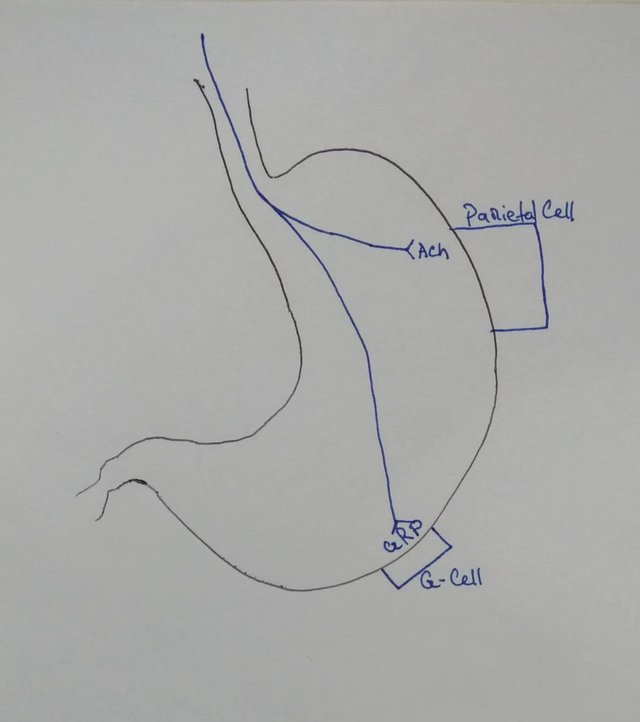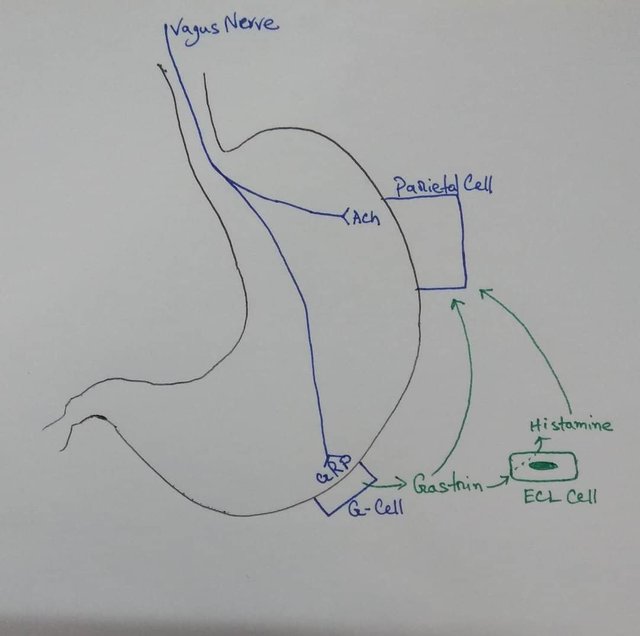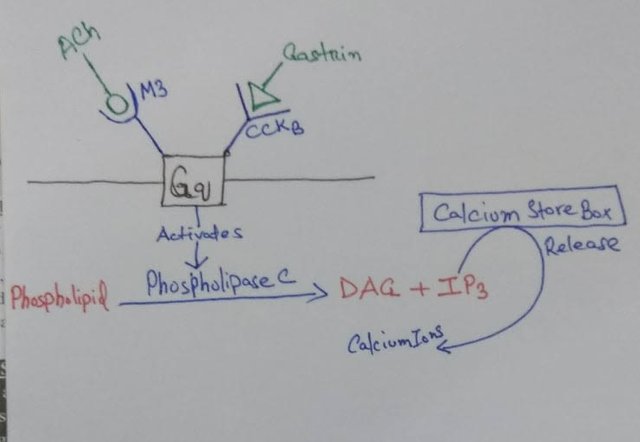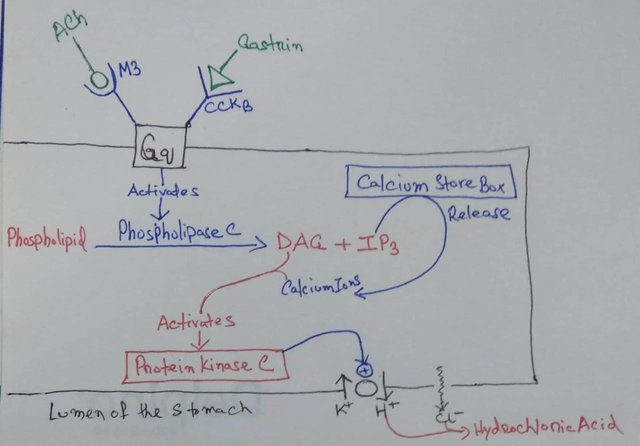ACIDITY Episode 1 : How Our Body Produces Acid
Hello Steemit! It's been a long, long time since I have posted on steemit. I got really busy working in a Hospital, but now i'm on a short break for a few months and will try to post again regularly on steemit!
A little bit about me, I used to be a steemstem mentor and a reference scientist back in the days when I was really active here. I'm a licensed doctor in my country now and as you guys can see on my blog, I'll be explaining in the simplest possible way I can, to explain how our body works!
Let's Get Started!
We all have at some point faced a bit of heartburn after a spicy meal or some degree of problem with acidity. And I'm sure all of us has taken some form of anti-ulcerant medications such as omeprazole, esomeprazole, lansoprazole, rabeprazole, famotidine, and so on to help with these symptoms.
What these medications do is reduce acid production, thus reducing the so called heartburn.
But before we learn how these medications work, we need to first understand how the body produces acid in the first place.
Physiology of the Control of Acid Production
When the food we eat reaches the stomach, the stomach gets distended. The body of the stomach has stretch receptors which respond to this distension causing signals to reach the stomach via the Vagus Nerve. The vagus nerve does two things :

- It releases the neurotransmitter Acetylcholine (ACh)
- It releases a peptide called Gastrin Releasing Peptide, (GRP)
We'll get back to acetylcholine in a moment. First let's deal with GRP.
As you can see from the image above, Gastrin Releasing Peptide (GRP) acts on the G Cell of the stomach and causes it to release a hormone called, guess what!! Gastrin!! Voila!!
This Gastrin isn't directly released into the stomach. Instead, it is released into the blood and it in turn does two things as well!

First and the primary action of gastrin is that it acts on Enterochromaffin Like Cells (ECL Cell) and stimulates it to release a substance called Histamine.
For Gastrin's second action, we'll bring back Acetylcholine as well and learn these two together. Because they exert their effects on acid production in the same mechanism.
Gastrin binds to receptor called CCKB on the parietal cell and ACh binds to an M3 Muscarinic receptor, also on the gastric parietal cell.
Both these receptors are coupled with a special protein called _Gq _ which, when activated by the binding of Gastrin or ACh, activates an enzyme called Phospholipase C.

As you can see from the image above, phospholipid was broken down into Diacyl Glycerol (DAG) and Inositol Triphosphate (IP 3). IP3 causes release of calcium ions from the intracellular stores of calcium and now we have an increased level of Calcium Ions (Ca2+ ) inside the cell.
Now the Ca2+ Ions along with DAG activates another enzyme called Protein Kinase C which increases the activity of a pump on the luminal side of the call called Hydrogen-Potassium (H+ -K+ ) ATPase or more commonly known as the Proton Pump.

What this pump does is, it takes potassium (K+ ) ions into the cells in exchange to pump out a hydrogen (H+ ) ion into the lumen of the stomach. Chloride Ions follow hydrogen ions out of the cell into the lumen where it unites with the hydrogen ion to form an acid we are all so very familiar with from our high school chemistry labs. Hydrochloric Acid!
Histamine binds to H2 Histamine receptors which is coupled with a Gs protein instead of a Gq. Once histamine binds to it's receptor, Gs protein activates an enzyme called Adenylate Cyclase which eventually leads to activation of Protein Kinase A. This enzyme, like Protein Kinase C, increases the activity of our Proton Pump and thus increasing acid production.
Why Do we Need This Acid?
A good question indeed!
A type of cell called chief cell in the stomach releases an inactive enzyme called pepsinogen. Acid is needed to activate this enzyme into pepsin which then begins protein digestion from the food we have just eaten!
But a more important function of this acid is actually protection against microbial infection. We can not guarantee that the food we take in are 100% free of bacteria or other microbes. But the hydrochloric acid is so strong that it will kill almost any microbes present in the stomach, thereby preventing infection from commonly found microbes in the environment that we might be ingesting with our food.
You may ask, if this acid is indeed so strong, how come it doesn't destroy the stomach itself?
If you are asking these questions, Bravo! You have a good understanding of physiology and a a very critical thinking ability!
Well, we have Protection, Pun intended!!
- Prostaglandins circulating in the blood stimulates the production of Mucus and Bicarbonate (HCO3- ) ions from mucous cells of the stomach. The mucus and bicarbonate creates an alkaline environment along the mucosal surface of the stomach thus protecting it from the extremely potent acid in the lumen.
- The mucosal cells of the stomach also have some peptides called Trefoil Peptides and these are acid Resistant.
- And lastly, the cell renewal capacity of the stomach mucosa is immense! They are rapidly producing new cells continously so that there is no damage remaining in the mucosa from the acid in the lumen.
The Human Body indeed is wonderful, isn't it!
In the coming episodes of this series, We'll be learning why this acid can be a problem, a very common disease I can assure you of that! ;)
We'll also be learning how the famous anti-ulcerant medications that have become a part of our daily lives for a lot of people out there!
And most importantly, We'll learn why we shouldn't be taking anti-ulcerants indefinitely, however we wish, whenever we wish!
Until then, Stay Healthy!!
If you enjoy medical topics, or want to learn how different things work in this amazing human body, please make sure to follow me at @simplifylife
Join the Steemstem Discord if you want to start writing high quality science articles as well!!
References :
Ganong's Physiology, 25th Edition
Textbook of Medical Physiology, Guyton and Hall, 13th Edition
Image Credits :
ALL the images are hand-drawn by me.
You post has been manually curated by BDvoter Team! To know more about us please visit our website or join our Discord.
Are you a Splinterlands player? If Yes, then checkout MonsterMarket.io. Get instant 3% cashback on every card purchase, and 2% cashback on every booster pack purchase on MonsterMarket.io. MonsterMarket has the highest revenue sharing in the space - 60% for cards and 40% for packs, no minimum spending is required. Join MonsterMarket Discord.
BDvoter Team
Thanks so much!! This was wonderful!
Welcome back my friend...
Thanks bro!! It's been such a long time! How have you been? I've missed all the fun we used to have on discord :(
Congratulations!
Curated by
@sourovJoin us on Discord






A Youth Run Community Organization from Bangladesh
50SP100SP200SP500SP1000SP2000SP5000SP10000SP